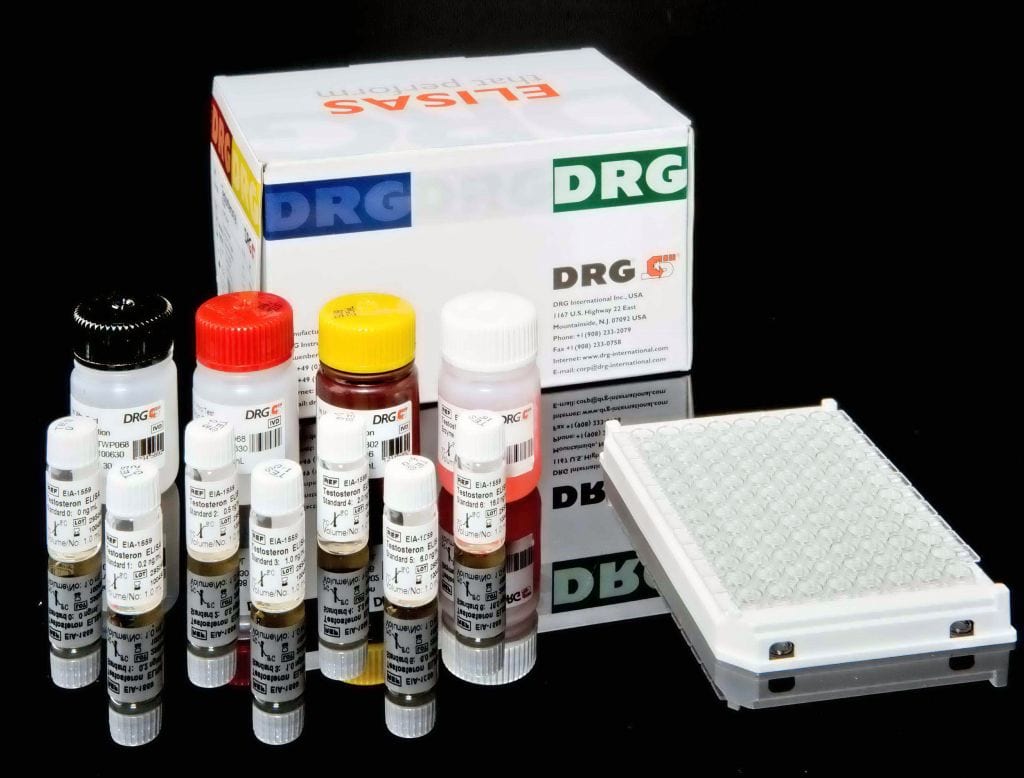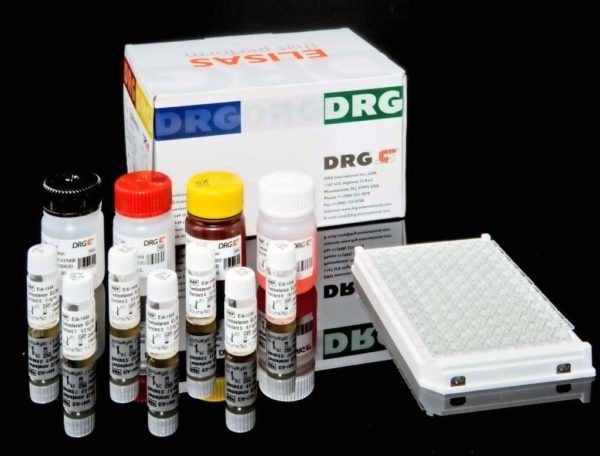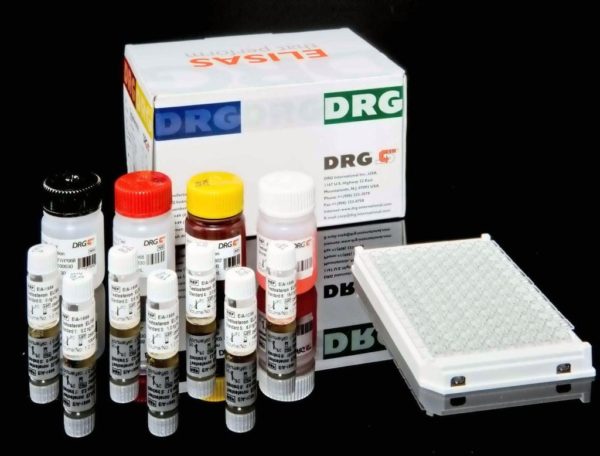Description
The DRG hCG ELISA is intended for the quantitative determination of human chorionic gonadotropin (hCG) concentration in human serum. The assay is for use in the early diagnosis of pregnancy in a clinical laboratory setting.
Human chorionic gonadotropin (hCG) is a glycoprotein hormone normally produced by the placenta during pregnancy.1-3 The hCG molecule consists of two combined, dissimilar
subunits designated alpha and beta. The beta subunit, with a molecular weight of approximately 30,000 daltons, confers biological and immunological specificity to the entire hCG molecule by virtue of its unique amino acid sequence and content.The alpha subunit, with a molecular weight of approximately 18,000 daltons, is essentially identical to the alpha subunit of the pituitary glycoprotein hormones: luteinizing hormone (LH), follicle-stimulating hormone (FSH), and thyroid-stimulating hormone (TSH).2-10The appearance of hCG in urine or serum soon after conception and its rapid rise in concentration makes it an ideal indicator for the detection and confirmation of pregnancy. However, elevated hCG levels are also frequently associated with trophoblastic and non-trophoblastic neoplasmas; these conditions should be considered before a diagnosis of pregnancy can be made.11-17, 31-35 In women with a multiple pregnancy (twins, triplets, etc.), levels of hCG have been reported to be higher than those expected during a normal single pregnancy. This is probably the result of the increased placental mass necessary to sustain multiple fetuses. Also, as one might suspect, cases of placental insufficiency show levels of hCG lower than those expected during normal pregnancy. Decreased values have also been associated with threatened abortion and ectopic pregnancy.25-30 Immunoassays utilizing antibodies specific to the beta subunit of hCG provide a sensitive and specific technique allowing early detection of pregnancy around the time of the first missed menstrual period.18-24The DRG hCG ELISA Test is based on a solid phase enzyme-linked immunosorbent assays (ELISA).26, 27 The assay system utilizes one mouse monoclonal anti-hCG antibody for solid phase (microtiter wells) immobilization and another mouse monoclonal anti-hCG antibody in the antibody-enzyme (horseradish peroxidase) conjugate solution.The test specimen (serum) is added to the hCG antibody coated microtiter wells and incubated with the Zero Buffer at room temperature for 30 minutes. If hCG is present in the specimen, it will combine with the antibody on the well. The well is then washed to remove any residual test specimen, and hCG antibody labeled with horseradish
peroxidase (conjugate) is added. The conjugate will bind immunologically to the hCG on the well, resulting in the hCG molecules being sandwiched between the solid phase and enzyme-linked antibodies.After incubation at room temperature for 15 minutes,the wells are washed with water to remove unbound-labeled antibodies. A solution of TMB is added and incubated at room temperature for 20 minutes, resulting in the development of a blue color. The color development is stopped with the addition of 1N HCl, and the color is changed to yellow and measured spectrophotometrically at 450 nm. The concentration of hCG is directly proportional to the color intensity of the test sample.




